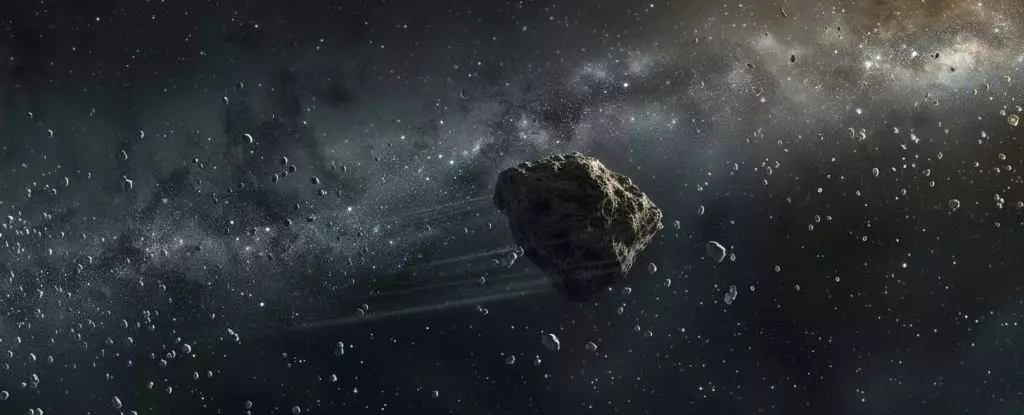A recent study led by astronomers from the University of Michigan has shed light on a fascinating discovery: up to 60 percent of near-Earth objects may be “dark comets” containing ice within their rocky bodies. These dark comets have the potential to provide insights into the origins of Earth’s water, raising questions about the sources of water in the early Solar System.
Understanding Free-Roaming Rocks
Within the Solar System, free-roaming rocks come in various forms, including asteroids and comets. While asteroids are dry rocks, comets contain ice that can be ejected as they approach the Sun. Dark comets, a lesser-known hybrid type, exhibit characteristics of both asteroids and comets, including non-gravitational acceleration that sets them apart from traditional space rocks.
Unveiling the Characteristics of Dark Comets
Dark comets are unique in that they do not display a visible coma or tail typical of comets. However, they exhibit accelerated spinning and motion caused by outgassing, distinguishing them from ordinary asteroids. By studying known dark comets, researchers have estimated that a significant percentage of near-Earth objects could belong to this elusive category, hinting at the presence of more frozen material in the Solar System.
The discovery of dark comets carries implications for the origin of water on Earth. While it remains uncertain whether these comets directly delivered water to our planet, their existence points to alternative mechanisms for transporting ice to the inner Solar System. This suggests that the inner main asteroid belt may harbor more ice than previously thought, opening up new avenues for research into the distribution of frozen materials in our cosmic neighborhood.
Simulation studies have revealed that most dark comets near Earth likely originated from the main asteroid belt, with some experiencing centrifugal fragmentation due to accelerated spinning. This process results in the formation of multiple icy fragments that continue to move under non-gravitational forces, contributing to the population of near-Earth objects. By analyzing the composition and trajectories of dark comets, scientists aim to unravel the complex history of these enigmatic space rocks.
The exploration of dark comets represents a promising avenue for understanding the dynamics of the early Solar System and the distribution of ice-rich materials. As researchers delve deeper into the mysteries of these elusive objects, new insights may emerge regarding Earth’s water sources and the role of dark comets in shaping the evolution of our cosmic environment. By leveraging advanced technologies and innovative techniques, astronomers continue to push the boundaries of knowledge, unraveling the secrets hidden within the depths of space.


Leave a Reply